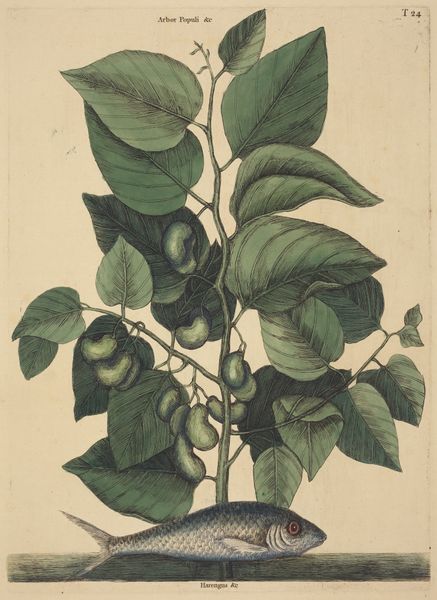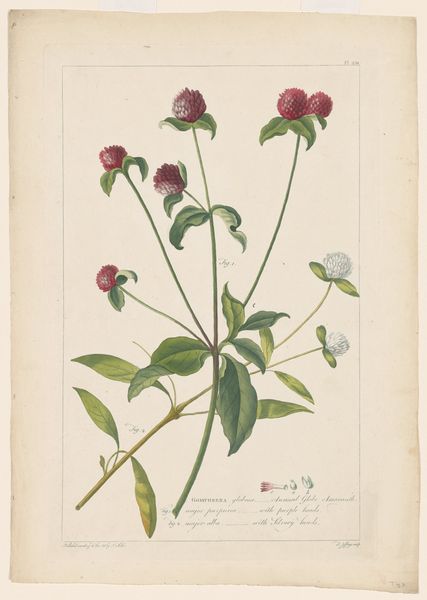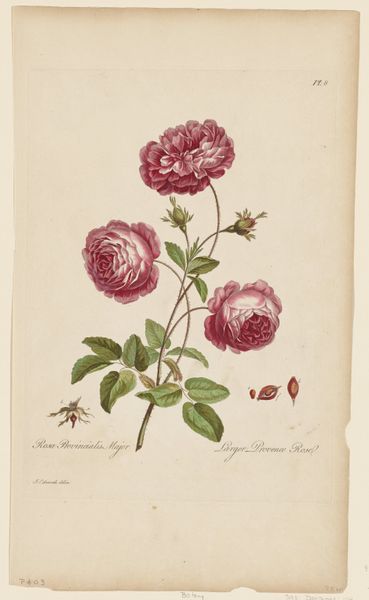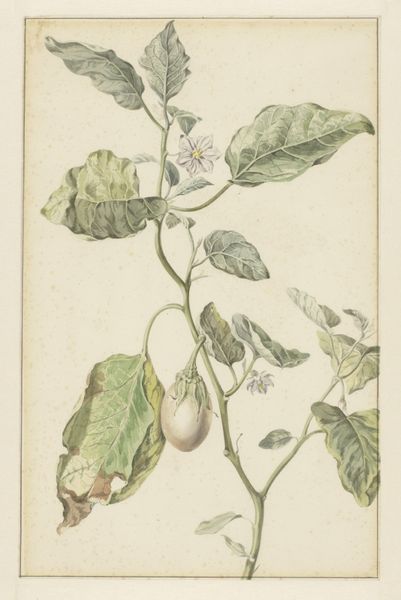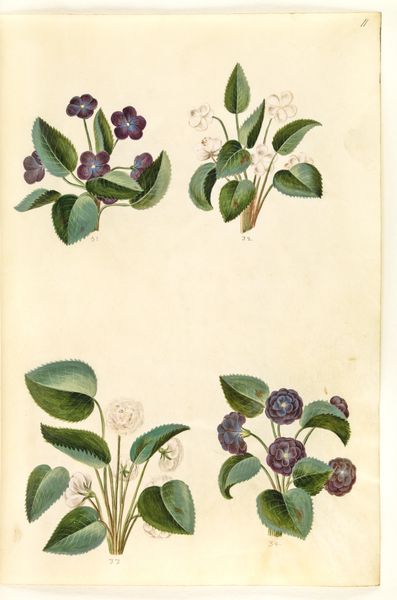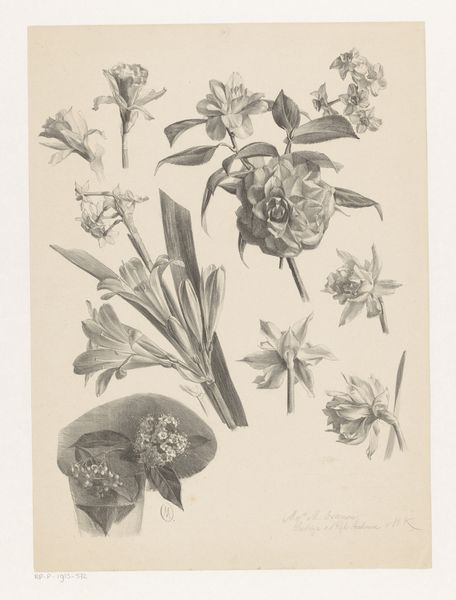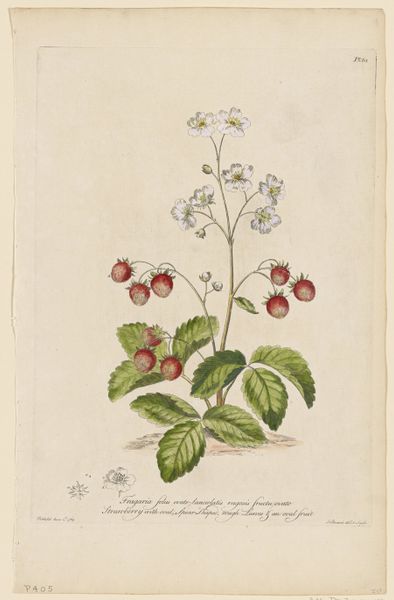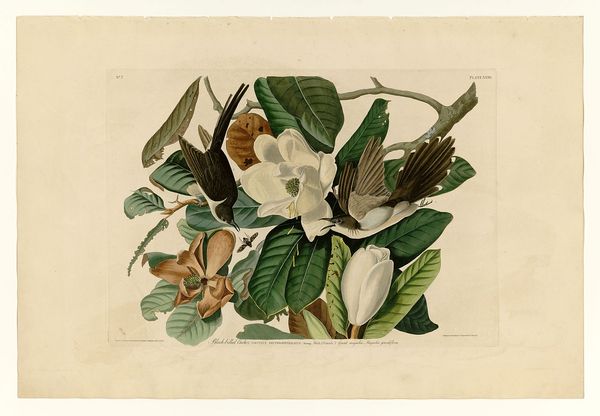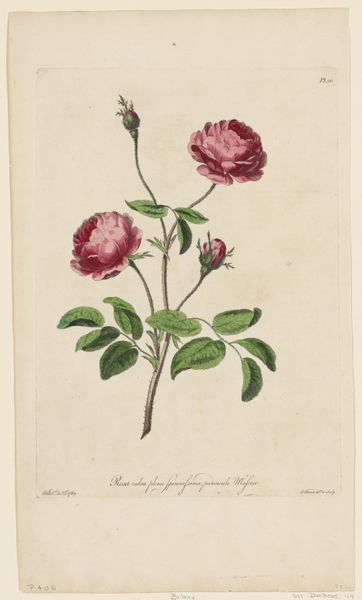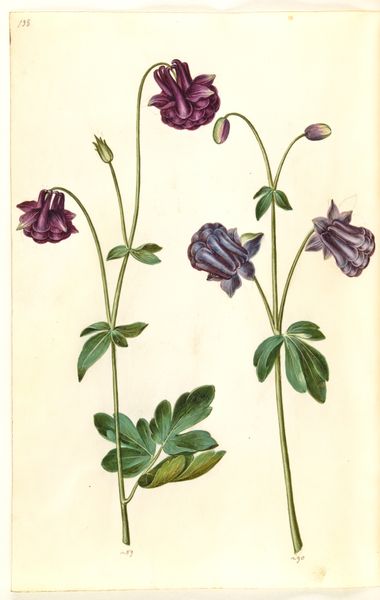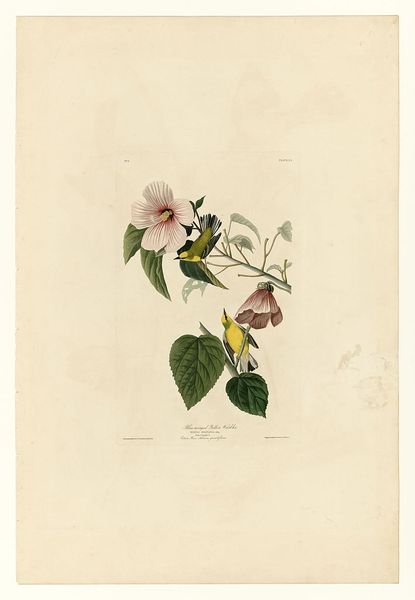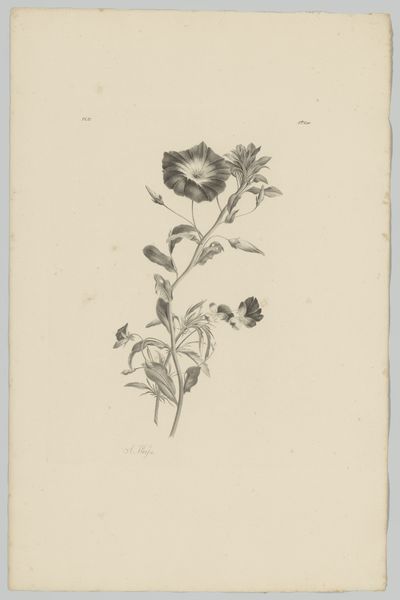
Alcea Rosea from Icones Plantarum Medicinalium 1788 - 1812
0:00
0:00
drawing, tempera, print, gouache
#
drawing
#
tempera
#
neoclassicism
# print
#
gouache
#
romanticism
#
watercolour illustration
#
botanical art
Dimensions: 17 3/8 x 10 1/4 in. (44.13 x 26.04 cm) (plate)18 5/8 × 12 7/8 in. (47.31 × 32.7 cm) (sheet)
Copyright: Public Domain
Editor: So, here we have *Alcea Rosea from Icones Plantarum Medicinalium*, dating back to somewhere between 1788 and 1812, by Joseph Jakob Plenck. It's currently housed at the Minneapolis Institute of Art, and it looks like it’s made with a combination of drawing, tempera, gouache and print techniques. I find the color palette of this piece really interesting – the deep browns of the hollyhock flowers make it quite striking! What jumps out at you when you look at this botanical study? Curator: Oh, that's a piece that whispers secrets, doesn't it? Those dusky, almost mournful hollyhocks...they evoke such a strong feeling. It feels both scientifically precise and achingly romantic, doesn't it? Almost like a pressed flower in a forgotten diary. Think about what was happening when this was made. The Enlightenment was giving way to Romanticism, wasn't it? There was such a renewed interest in nature. Perhaps as a retreat from the cold rationality of the Enlightenment. Do you notice how carefully Plenck details every vein and fold? Almost obsessively so. Editor: I do. It is quite detailed, bordering on hyper-realistic! Almost like a photograph, only painstakingly rendered by hand. The way each individual element is broken down… it makes you appreciate the structure and construction of this singular plant. Was there a larger context surrounding the popularity of works such as these? Curator: Precisely. Now, consider Plenck's choice to render this particular specimen. Given that it comes from a series titled *Icones Plantarum Medicinalium*, this piece was also created as a medical reference, of sorts. I think what intrigues me most is the blend of purposes…scientific, artistic, medical. I also get a sense of transience. It makes one contemplate our relationship with nature and how we, as humans, constantly seek to understand it and use its properties to prolong our existence. But the beauty of the artwork makes one question if there were more than purely medical or utilitarian motivations for creating art like this. Editor: So, we have science, art, medicine all wrapped into one rather somber bloom! Thank you! Curator: A lovely discussion; thank you!
Comments
No comments
Be the first to comment and join the conversation on the ultimate creative platform.
